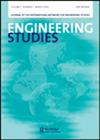Negotiating boundaries: an intersectional collaboration to advance women academics in engineering
IF 1.3
3区 工程技术
Q2 EDUCATION, SCIENTIFIC DISCIPLINES
引用次数: 0
Abstract
This paper draws on data from the National Science Foundation (NSF) ADVANCE-funded LATTICE program (Launching Academics on the Tenure-Track: an Intentional Community in Engineering) to examine how a diverse group of women worked across social and professional identities to support early-career women in academic engineering. We used ethnography to elucidate the social dynamics and power relations involved in forming a coherent group identity for the LATTICE leadership team, and the boundaries we negotiated in running the LATTICE program. We identify the processes and behaviors through which we made boundaries between members salient yet porous to build a coherent community across various dimensions of difference. We offer three actionable strategies that impact change agents’ engagement and the group’s coherence across multiple dimensions of difference: (1) intentionally creating a socio-emotional culture in our group, one that spans across group members’ personal and professional identities; (2) validating other group members’ perspectives, and (3) striving to build consensus using storytelling. These strategies of the LATTICE leadership team provide guidelines for others who work across intersecting dimensions of difference.谈判边界:促进工程领域女性学者的交叉合作
本文借鉴了美国国家科学基金会(NSF)高级资助的LATTICE项目(启动终身教职学者:一个有意的工程社区)的数据,研究了不同群体的女性如何跨越社会和职业身份,支持学术工程领域的早期职业女性。我们使用人种学来阐明社会动态和权力关系,这些关系涉及到为LATTICE领导团队形成连贯的群体身份,以及我们在运行LATTICE计划时谈判的边界。我们确定了过程和行为,通过这些过程和行为,我们使成员之间的界限突出,但又多孔,以建立一个跨越不同维度差异的连贯社区。我们提供了三个可操作的策略来影响变革推动者的参与和团队在多个不同维度上的一致性:(1)有意在我们的团队中创造一种社会情感文化,一种跨越团队成员的个人和职业身份的文化;(2)验证其他小组成员的观点,(3)努力通过讲故事建立共识。莱迪思领导团队的这些策略为其他跨越差异交叉维度的人提供了指导方针。
本文章由计算机程序翻译,如有差异,请以英文原文为准。
求助全文
约1分钟内获得全文
求助全文
来源期刊

Engineering Studies
ENGINEERING, MULTIDISCIPLINARY-HISTORY & PHILOSOPHY OF SCIENCE
CiteScore
3.60
自引率
17.60%
发文量
12
审稿时长
>12 weeks
期刊介绍:
Engineering Studies is an interdisciplinary, international journal devoted to the scholarly study of engineers and engineering. Its mission is threefold:
1. to advance critical analysis in historical, social, cultural, political, philosophical, rhetorical, and organizational studies of engineers and engineering;
2. to help build and serve diverse communities of researchers interested in engineering studies;
3. to link scholarly work in engineering studies with broader discussions and debates about engineering education, research, practice, policy, and representation.
The editors of Engineering Studies are interested in papers that consider the following questions:
• How does this paper enhance critical understanding of engineers or engineering?
• What are the relationships among the technical and nontechnical dimensions of engineering practices, and how do these relationships change over time and from place to place?
 求助内容:
求助内容: 应助结果提醒方式:
应助结果提醒方式:


